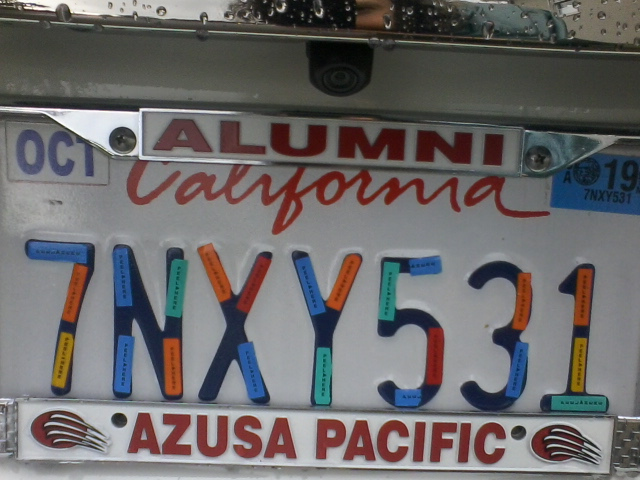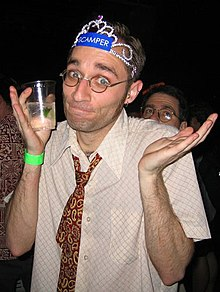 When I saw this license plate, I thought "Cool, they've been doing this for over twenty years!"
When I saw this license plate, I thought "Cool, they've been doing this for over twenty years!"
But then I realized that an assumption I'd made was definitely wrong.
What was my original assumption and how did I realize it was wrong?
The stickers cycle through five colors on a 5-year cycle. The strips decorating this plate are the stubs, which you'd normally throw away. (If you look closely, they say PEEL HERE.) I assumed that each year, when the car owner got their registration, they added another stub.
This theory started to fall apart when I noticed the suspiciously high ratio of orange/blue stubs to yellow/red. But the final blow came from the format of the license plate number. California plates used to have just three letters and three digits. When the possible plates were exhausted, the state switched to three digits and three letters. When those ran out, they added an extra digit at the beginning: first 1, then 2, etc. The extra digit didn't reach 7 until about 2013, so this plate is definitely not old enough to have accumulated 21 sticker stubs at a rate of one per year.
Maybe the driver works for the DMV. ¯\_(ツ)_/¯
Solution
License plates have to display a current registration sticker, like the blue "19" sticker in the upper right corner of the picture which indicates expiration in 2019. (I took this photo a while ago.)
Congratulations to yesterday's solvers; at least one part was solved by Jessica, Jacob C., Charlie, Leo S., Kate, Jason, and Mr. Gregg. Thanks to everybody who made a guess!
